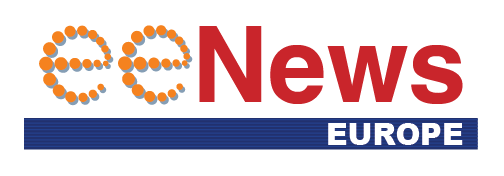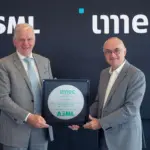
CEO interview: Leti takes on 6G
 Cette publication existe aussi en Français
Cette publication existe aussi en Français
Sébastian Dauvé has seen his challenges triple in two short years.
When Dauvé (above) took over as CEO of French microelectronics research lab CEA-Leti in 2021, the main challenge was to drive innovation for microelectronics in Europe. This had resulted in the first gate all around transistor back in 2015 that is now the mainstay of leading edge 3nm and 2nm process technology, spinning out technologies from FD-SOI at Soitec to in-memory computing to quantum computers.
“In the past the challenge was innovation to support industry but now we also drive innovation that supports systems and support sovereignty and that’s a big challenge,” he tells Nick Flaherty at eeNews Europe during the Innovation Days at its base in Grenoble, France.
The labs are key to the next generation of FD-SOI down to 7nm for ST Microelectronics and Global Foundries (GF) at the joint venture in Crolles just down the road, with a new clean room being built later this year and a major new pilot line. This will be at the heart of the development of new technologies for microcontrollers and 6G wireless over the next decade.
Sustainability
“Sustainability is a clear need for our own clean room and for partners, sovereignty for France and Europe Chip Act so the focus is for FD SOI for 2030 on the market at 10 to 7nm,” he said. “We will address computing and RF with FD-SOI and GF is more specialist for RF and of course we will also see how the substrates evolve.”
But there is also now the system considerations, particularly with quantum computers and the next generation of 6G wireless.
“On the system ability we address this with the full stack approach as it begins with materials,” he said. “We have to reduce the layers of materials with optimisation and change the materials, deliver the device and understand the future applications. 6G will change the operating frequencies so it will be completely different form the current situation. There will be opportunities to reduce the power consumption.”
“We have many partners who tell us we are the one place where we can turn good ideas into products as we have the equipment and clean rooms to explore and mature the technology and this is what we want to stress on in the future but we will keep the connection between research and industry.
- Leti details move to 10nm, 7nm FD-SOI process in Europe
- Intel, CEA-Leti to develop 2D material transfer for future transistors
- Leti announces replacement as CEO goes to Soitec
“FD-SOI is the most energy efficient solution for mixed signal design,” says Jean-René Lèquepeys, chief technology officer and Director of Programmes at Leti. “We think it will be disruptive as it will have the same performance as a 5nm FinFET. We want to push the limit on FD-SOI and at 7nm that’s the limit for immersion lithography. Then we plan to go to GAA with 2D materials. We know GAA well and have 45 patents on that, and this technology will be needed for automotive products such as microcontrollers from 2032.
This is about advanced technologies rather than leading edge, he says.
“We don’t want to be a leader at the leading edge. In memory computing for example there is a drastic change in architecture and the idea is not to use the most advanced nodes but rather high density for memory and computing and we have an important programme in that. Moving data withing the processor is 90% of the power consumption so that’s important to address. The in-memory computing could be in SRAM or RRAM but we need to develop compilers and schedulers to do this.”
A key difference today is that 3nm is increasing in cost per function for the first time. The latest 3nm wafers cost $25,000, up 20% so far this year.
“We are thinking there is a different way to have an efficient computing system with 3D heterogeneous packaging and with in memory computing. In two or three years it will be integrated into products and after that we will have to get rid of the Von Neuman architecture but there’s an enormous lot of legacy software. However, it will be the people coming from microcontrollers who could play a key role in edge computing, not the big CPUs.”
- Siemens, Leti team for first automated hybrid photonic design
- Leti combines nine research tracks for sustainable electronics
- imec and CEA-Leti work together on AI and quantum
Sovereignty is a key requirement to support now with the EU Chips Act.
“If we don’t have a foundry we lose,” said Dauvé. “If you take the microcontroller market, they are used in many different markets and have to last a long time, so it is absolutely necessary to keep this capability.”
Sovereignty is also about protecting user data, processing at the edge with low power, low latency systems. “We have to go faster to edge computing,” said Lèquepeys.
This is the thinking behind the major pilot line project at Leti rather than the one at imec that is aiming for sub-nm process technologies.
“The pilot line will be open to all European stakeholders as a way to promote the technology but we are also thinking about wider technologies such as FDSOI. We will acquire a 300mm line with tools first for FD-SOI but with tools also for other applications and in the end we want to open this to many players in Europe. It’s not easy to process this kind of advanced technology.”
“For 3D and chiplets we need both FinFET transistors in a big CPU and FDSOI, we absolutely need both. We have to select the right technology for the right function, whether that’s photonics or quantum devices on FD-SOI.”
 If you enjoyed this article, you will like the following ones: don't miss them by subscribing to :
eeNews on Google News
If you enjoyed this article, you will like the following ones: don't miss them by subscribing to :
eeNews on Google News






